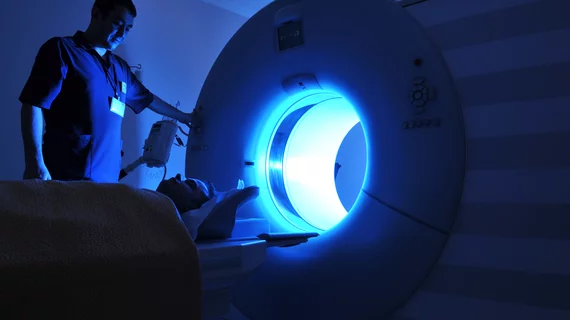Outsourcing reporting during out-of-hours shifts benefits staff, but is it sustainable?
Over the last decade, radiologists have had to adapt to a significant increase in out-of-hours reporting and, according to a new analysis, that trend does not appear to begin slowing anytime soon.
Published in Clinical Radiology, the new paper reviews the increasing demand for clinically urgent out-of-hours (OOH) CT reporting over the last 15 years, as well as the resultant impact it has had on specialty trainees and patients. Corresponding author of the paper, Paul Lyon, from the Department of Radiology at Oxford University Hospitals NHS Foundation Trust, and colleagues shared that during this time frame, requests for urgent CT reads during the evening, overnight and on the weekends has increased more than 10-fold, causing a negative ripple effect throughout the radiology workforce, especially among residents.
“The rate of increase in the demand for complex imaging continues to outstrip the rate of expansion of the clinical radiology consultant workforce and as a result, the radiology specialty is currently experiencing a workforce crisis and urgent action is needed,” the authors explained.
To compensate for the increased demand for CT interpretations outside of normal working hours when resources were limited at Oxford University Hospitals NHS Foundation Trust, an option to outsource acute CT on an ad hoc basis was introduced in 2020. By the end of 2021, approximately 22% of exams were outsourced during a 12-hour night shift, leaving close to 78% of exams to the specialist trainee on staff.
Residents who most often reported during OOH shifts answered surveys before and after the option to outsource reads was offered. The results of said surveys revealed a significant increase in job satisfaction after the option to outsource during especially busy shifts was available to use.
The authors of the paper noted that without the ability to outsource a portion of examinations, trainees would miss out on valuable in-hours training opportunities. However, outsourcing comes at a significant financial expense, and thus, likely cannot be sustained long-term, the authors explained, adding:
It is undeniable that outsourcing is more expensive than in-house reporting. Thus, in the face of anticipated further increases in imaging demand, outsourcing is unlikely to be a sustainable solution in isolation due to both financial costs and an upper limit to outsourcing resources.”
Addressing the needs in the short and long-term will require a myriad of solutions, the authors suggested. These solutions range from AI implementation to collaborative services that increase the number of on-call trainees and beyond. However, staffing radiology staffing shortages felt worldwide stand to prolong much needed changes, the authors indicated.
The study abstract can be viewed here.

